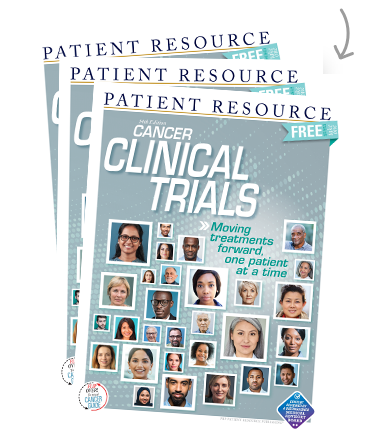Clinical Trials
Safety Measures
One major concern people may have about joining a clinical trial is whether it is safe. It should be reassuring to know that multiple guide- lines and regulations are followed to ensure that all clinical trial participants are protected throughout the process. This is done through several levels of safeguards and a set of rules called a protocol.
The protocol defines the trial’s eligibility criteria, specifies the tests and procedures, describes the medications and dosages, and establishes the duration of the study. Before the study begins, a scientific review panel evaluates the protocol carefully to make sure the trial is based on sound science. All participating clinics, hospitals, universities, cancer centers and medical offices, regardless of their size or location, must follow the same protocol.
Safety Guideline Providers
Protecting a patient’s safety is the number one priority in clinical trials and is overseen by three main groups. Each manages different aspects of the trials.
The U.S. Food and Drug Administration (FDA) is responsible for the safety, efficacy and security of drugs and has regulated them since the 1970s. It monitors several steps in the drug development process, which requires extensive research and numerous applications before and after clinical testing. The FDA also works closely with pharmaceutical companies to ensure the integrity of new treatments and medications.
Institutional Review Boards (IRBs) review each clinical trial’s protocols before the study begins and monitor the trial’s ongoing progress from beginning to end. Members are in charge of reducing the risk of harm when compared with possible benefits to participants. An IRB may consist of scientists, doctors, nurses, social workers, chaplains, patient advocates and other health care or community professionals.
Data and Safety Monitoring Boards (DSMBs) review the progress of a clinical trial while monitoring the participants. They also review data on the effectiveness of the trial interventions. Each trial has only one DSMB, and it is usually composed of doctors, statisticians and others who are independent of the people, organizations and institutions that are sponsoring, organizing and conducting the clinical trial. Mem
In addition to safety oversight from these groups, the government passed the National Research Act in 1974, which ultimately led to the creation of three basic ethical guidelines for clinical trials:
1. Respect for people — All people, including those who require assistance to make their own decisions, should be respected and have the right to choose which treatments they receive.
2. Beneficence — People are treated in an ethical manner by respecting their decisions, protecting them from harm and making efforts to secure their well-being. Additionally, people should be protected from harm by maximizing benefits and minimizing risks in the research study.
3. Justice — All people should share the benefits and burdens of research.
All studies are directly supervised by physicians and research experts to ensure compliance with all scientific and ethical guidelines. These regulatory requirements for drug studies address safety and efficacy issues unique to the use of drugs in clinical research and are designed to guarantee the safety of all participants in a clinical trial. Every trial also has a local principal investigator whose name and phone number are on every trial and can be contacted. In addition, all investigators have required training and periodic updates of training.
Failure to meet the FDA’s regulations can have legal and financial consequences for those conducting the research as well as for the institutions associated with the research activities. All drugs must pass a series of tests and undergo a rigorous evaluation process by the FDA’s Center for Drug Evaluation and Research (CDER) to ensure they are safe and effective before being available to the public. A team of CDER doctors, chemists, pharmacologists and other scientists analyze the medications at various stages during the approval process.



